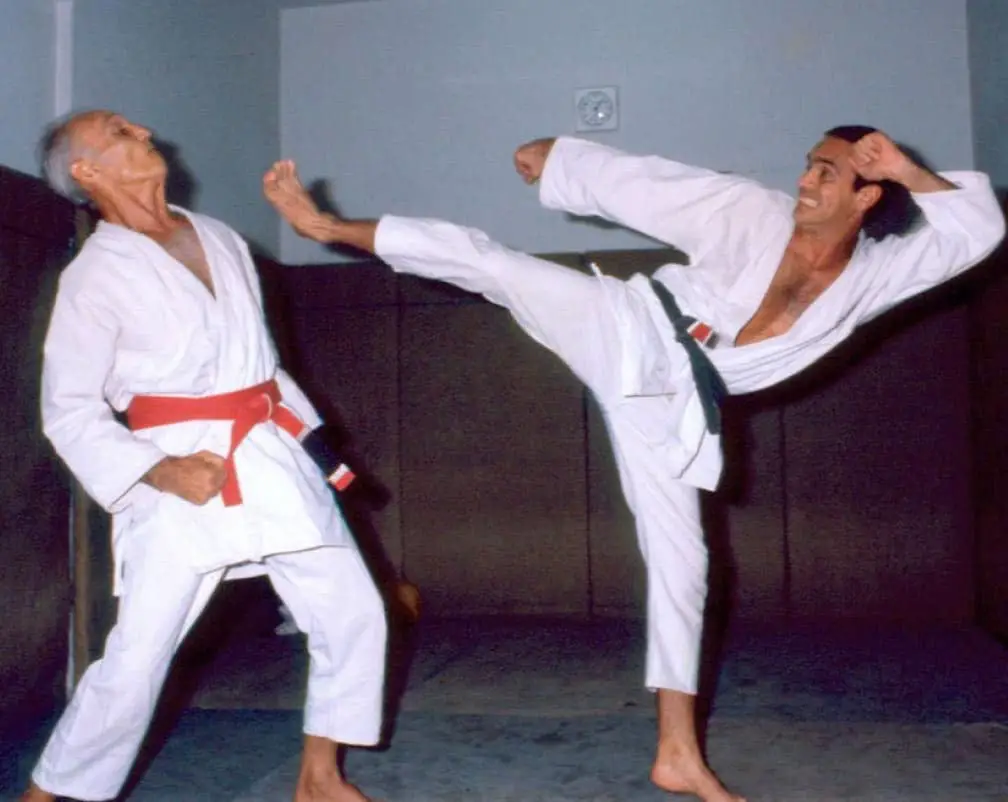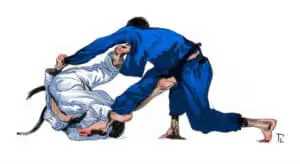
BJJ enthusiasts love to make a lot of bold claims about their martial art. Many are convinced that Jiu Jitsu is the most effective combat system and is best suited to street fights. Is that really the case?
Why BJJ Is Not Good For Self-Defense?
BJJ is not good for self-defense because it does not incorporate striking which is the main strategy used by attackers. It does not emphasize takedowns. It focuses on ground fighting which is often a terrible strategic choice as you can not escape or protect yourself against multiple attackers.
BJJ is very overrated as an effective martial art for self-defense scenarios. BJJ shines in a 1v1 fight that takes place on a soft mat. In a street fight where there are multiple attackers and weapons involved its effectiveness plummets.
BJJ Has No Striking
Nearly all street fights involve some level of striking. Typically some drunken idiot will start throwing wild punches. It is very rare that you see a street fight that has no strikes thrown. For most when they are ready to fight it is instinct to start letting their fists fly.
How can be BJJ be an effective martial art if it does not teach you how to deal with the most common attack used in a self-defense scenario?
BJJ athletes may have amazing grappling techniques and know hundreds of different submissions but if they aren’t used to fighting when strikes are being thrown then don’t be surprised if many crumble during a street fight.
Strikes completely change the game. BJJ athletes don’t know how to gauge distance which can easily lead to them standing in striking range and copping a clean punch, knocking them out instantly.
BJJ athletes don’t know how to anticipate punches. A trained striker looks for movements in his opponent’s shoulders which allows him to tell exactly when they are going to throw a punch.
BJJ athletes do not know how to block or slip punches. A sloppy striker does not need to be Floyd Mayweather to catch a BJJ athlete who has never blocked a punch in his life. While good luck hitting a trained boxer with a clean punch, they are going to be blocking, slipping and rolling.
BJJ athletes do not know how to stand in a fight stance. BJJ athletes will often stand up tall with their chin in the air. This is an invitation to be knocked out. A train striker will know how to keep his chin tucked and turned slightly away from his opponent.
The fact that BJJ does not teach any form of striking puts its athletes at risk of getting knocked out in a street fight. BJJ would be much better suited to self-defense if the athletes trained with strikes on a regular basis to prevent them suffering a deer in headlight reaction when haymakers start being thrown at their face.
BJJ Does Not Emphasize Takedowns
BJJ does not train takedowns nearly enough. Some clubs do not train them at all while many gyms do zero sparring involving takedowns.
How can BJJ be effective in a street fight when it is a grappling martial art whose participants are not even proficient in the most important aspect of grappling?
If you are training a grappling martial art like BJJ where most of the techniques occur on the ground how are you going to win the fight if you can’t take your attacker down?
As essentially all self-defense situations start with both combatants on the feet BJJ comes close to useless if the BJJ athlete can not win the standing grappling battle and complete a takedown.
For example a random person starts swinging punches at a BJJ athlete the BJJ athlete steps in and clinches, then goes for a takedown. The attacker throws off the weak takedown attempt, the Jiu Jitsu practitioner tries another takedown and fails again. What does the BJJ athlete do now?
If the BJJ athlete was proficient in takedowns he could simply grab the attacker and violently throw him to the ground either knocking him out or severely testing his will to fight. From there he could use his ground fighting techniques to quickly lock up a submission and end the fight.
The fact that many BJJ schools are marketing themselves as teaching students self-defense but do not teach takedowns is a disgrace.
BJJ athletes should be spending at least 30% of their training on takedowns. This involves hours and hours of both drilling and sparring. There is no excuse to train in a grappling martial art and not be proficient in takedowns. If all BJJ athletes were skilled takedown artists the overall effectiveness of the martial increases dramatically.
BJJ Focuses On Ground Fighting
Nearly all of BJJ occurs on the ground. Once a BJJ expert gets you on the ground you are in serious trouble. They are going to quickly pin you and lock up a submission. Before you know what is happening one of your limbs will snap or you will be taking a nap from a nasty choke.
While this may sound like a great strategy, fighting on the ground in a self-defense scenario is not a smart move for the following reasons:
- Vulnerable to multiple attackers – When you are on the ground you can not manage your environment effectively. A second or third attacker can easily sneak up behind unbeknownst to you and start kicking your head in. In the standing position, you can use your peripheral vision to monitor for more attackers
- Can’t escape effectively – When you are stuck on the ground particularly if you are underneath someone your ability to maneuver and escape is limited. If you are standing you can easily evade your attacker and turn and run if necessary
- Close contact with an attacker – What if you are fighting someone with diseases or other transmittable conditions, do you really want to up close and personal with them? Being so close also allows your attacker to eye gouge, bite, or attack your genitals. An untrained lunatic could easily cause you permanent damage. I would rather keep my distance and throw long-range strikes
